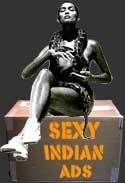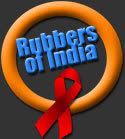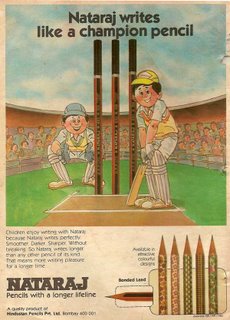On my usual ad hunting endeavour I happened to discover this 20-year-old piece by Mohan Sivanand (accompanied by RK Laxman's illustrations). It gives us a peek into the world of newspapers when computers had made their initial impression and the internet and Google were still many years away.
Reproduced from Reader's Digest - February 1987
From this l48-year-old newspaper's six-storeyed Bombay headquarters is produced what is probably India's most influential daily. Here is a composite account of...
A Day in the Life of The Times of India
By Mohan Sivanand
At 8AM, the third-floor editorial hall, the heart of the newspaper, is deserted. The only thing moving in the huge, cluttered room, a little bigger than a tennis court, is paper spewing out intermittently from seven teleprinters caged in a corner. At this early hour, most of the news reports are from abroad: there's one from Ankara on a visit to India by Turkish premier Turgut Ozal; another from Chicago about Boris Becker thrashing I van Lendl in straight sets.
Meanwhile, having breakfast at his suburban flat 20 kilometres away, chief reporter Allwyn Fernandes reads the morning's Times. He's struck by a brief front-page report: the previous night in Goa, Bombay policemen. arrested Charles Sobhraj, who had escaped from Delhi's Tihar Jail two weeks earlier after drugging the guards. Fernandes immediately phones city police commissioner DS Soman and learns that Sobhraj will be brought by car to Bombay around noon, en route to Delhi. This will be the day's biggest. story, and Fernandes calls reporters Oswald Pereira and RS Venkatesh at their homes to tell them that they three will cover it. Then he rings up staff photographer PM Shirodkar and assigns him to the city police headquarters.
Meanwhile, in the newspaper's press-room, workmen insert bars of lead into lino-typesetting machines. After being heated for an hour, the molten lead will be cast into typefaces for three of the newspaper's 24 pages. Until two years ago, the entire newspaper was typeset by this process, but now the Times is switching to computerized photo-typesetting, which is 10 times faster.
Keeping Track. At 9am, cartoonist RK Laxman, 62, as always in a dazzling white shirt and dark trousers, enters his cabin. He glances through. the morning papers. "No damned news," he mutters. "Nothing for a cartoon!" The first of the paper's 17 Bombay-based reporters to arrive is RS Venkatesh. Apart from gathering material on Sobhraj, his job today is to keep track of accidents, crimes, fires and other routine news. He first rings up the Customs Department and is told that two truckloads of contraband textiles and video cassettes were seized on the city's outskirts during the night. Then an officer at the coroner's court teJls .him about a young woman who fell out of a ninth-floor flat. "Suicide?" Venkatesh asks." An accident," replies the officer. Venkatesh quickly types out short reports of both incidents.
Downstairs, on the ground floor, at the head of a queue facing the classified advertisements counters, is a. young mechanical engineer, Vinod Nayak. A month ago, Nayak advertised for a job in the Times. Today, he looks thrilled as he's handed 21 replies.
All ads are scrutinized by the staff, but, occasionally, problems crop up. Two years ago, a "Births" announcement, which named the newborn's grandfather, led to an angry old man visiting the office. "None of my sons has had a baby," he insisted. An enquiry revealed the man had disowned his son for marrying against his wishes.
At this time of the morning, the pace at the news desk, where all reports are processed before being set in type, is easy. Chief subeditor ND Tilak sits at the head of a T-shaped desk, handing out reports to the four sub-editors arranged around him. sub-editing doesn't have the glamour of reporting, but it is a crucial part of a newspaper's operations. Subeditors are the final "packagers" of the news-they decide how long each report should be, where in the letters, long analytical articles newspaper it should appear, under on important issues of the day, what headline it should run. The paper's present editor, Girilal Jain joined as a "sub" in 1950,
Revealing its Soul. Just after 10, seven senior journalists meet over tea in editor Jain's room. Since Jain, who spends every alternate fortnight in his New Delhi office, is away, resident editor KC Khanna presides over the discussions. They start with the Sobhraj arrest - Fernandes describes how he will cover it, while Khanna decides to write an editorial commending the Bombay police. They go on to discuss Punjab and Pakistan politics. Assistant editor Achin Vanaik, who specializes in foreign affairs, talks about an editorial he plans on three Japanese managers who recently resigned from their firms to join western companies. "Things seem to be changing in Japan," Vanaik says. "Executives no longer stay for ever in one firm."
Men like Vanaik who write the paper's editorials are, like subeditors, largely desk-bound. Moreover, they are concerned with only one page in the newspaper-the editorial page. But it's on this page that the newspaper reveals its soul; it's here that its likes and dislikes, its prejudices and its enthusiasms are offered to its readers. On the editorial page, too, appear readers' letters, long analytical articles on important issues of the day, and a short humorous article popularly called the 'Middle'.
Once the meeting gets over at 10.45, Fernandes returns to his desk and begins reading news clippings of Sobhraj sent from the reference department on the fourth floor, where 18 librarians maintain photos, microfilms and files on more than 6,000 subjects.
Around 11 am, reporters begin strolling in. Their assignments are indicated in a big ledger on Fernandes's desk. Today, Debashish Munshi has civic affairs and is scheduled to attend a city corporator's dinner at 7.JOpm. Pushpa Iyengar has to cover a State Women's Council conference.
Venkatesh and Oswald Pereira will cover Sobhraj with Fernandes. While most beats are rotated, some like state politics are reported by specialists. Business and sports have their own separate departments.
At 11.30am, in the advertising department, now crowded with briefcase-toting visitors, ad manager R Sundar, who is dictating a telex-message, looks worried. Material for a Rs 21,000 textile ad, booked weeks ago, has not arrived from Delhi.
Just then, a man who says he wants to place an advertisement in the next day's Times, interrupts Sundar. Sorry, Sundar tells him, all display ads must be booked at least three days in advance. "It's for a very sick person looking for a kidney donor," the man pleads. Sundar demands a medical certificate. "There are many rackets involving kidney donors," he explains. Luckily, the man has one.
Advertising fills some 65 per cent of the newspaper's space. That's the secret behind a newspaper's economics: every day the Bombay edition earns Rs 6 lakhs from advertising and only about Rs 2 lakhs from readers.
Clattering of Teleprinters. All matter-whether advertisements or news-is checked by skilled proof-readers. The print is sometimes so tiny that chief reader Nicholas Coutinho, 52, uses a magnifying glass. In his 32 years with the Times, Coutinho has caught many an editorial slip-once a report from the north-east repeatedly referred to "Mizo gorillas."
By 1 pm, press workers join journalists and other Times employees in the crowded sixth.:floor canteen. The food is plain-rice, curry and roti-but subsidized and at just 50 paise, it's perhaps the cheapest trayful in this busy part of Bombay.
After lunch, five more subeditors arrive. The teleprinters are' really clattering away now. Reports from Times correspondents in 200 towns and cities in India and three foreign capitals-New York, London and Islamabad-come by telex, telegrams, even by post. At this hour, in Madras, special correspondent S. Dharmarajan is following a political crisis-Tamilnadu's labour minister has suddenly been stripped of his portfolio. Dharmarajan is at the minister's residence, where a large crowd has gathered.
Not all stories originate with the newsgathering staff. Two years ago, one reader complained to chief reporter Fernandes about a Rs 3,98'8 telephone bill that she'd received. There had obviously been a mistake and when she went to the telephone office to complain, she met five other people with the same problem. They soon discovered that they were being billed for some unknown person's foreign trunk calls. Despite clear evidence of wrong-doing, telephone officials insisted that all six pay up. But a few days later, after a report appeared on the Times' front page, the excess bills were withdrawn.
Front-Page News. At 3pm, Fernandes, Pereira, Venkatesh and photographer Shirodkar are at a press conference where senior police officers describe Sobhraj's arrest. Sobhraj hasn't yet arrived, and Fernandes is anxious. Then, hearing rumours that he may be brought in by air, Fernandes rushes another photographer, Michael Rodriguesl to the airport.
Meanwhile, civic affairs reporter Debashish Munshi gets a tip-off about a municipal order halting construction of a private Rs 400crore thermal power unit. He checks with an official who refuses to comment. Munshi, now convinced it's true, meets the concerned ward officer and 'learns that the unit encroached upon an area where construction was prohibited. Munshi hurries to civic engineers and the company's officials for details.
At 3.50pm, journalists at police headquarters finally meet Sobhraj's captors. But only Doordarshan cameramen are allowed to photograph Sobhraj. PM Shimdkar, the Times photographer, protests vigorously, but police officials say that an official photograph of Sobhraj will be distributed to the press shortly.
Cartoonist RK Laxman, meanwhile, chasing his 4.30pm deadline, is' giving final touches to two drawings. "I start every morning certain I won't get an idea," says Laxman, "but I've managed at least one every day for the last 40 years."
Just before 5pm, Fernandes, Venkatesh and Pereira, their notebooks full, return to the office and begin typing out their reports. Meanwhile, Debashish Munshi, still chasing officials for his thermal unit story, decides to skip the dinner meeting he's been assigned.
By. 6.40pm, Fernandes and the others finish their Sobhraj reports-the package will fill half the next day's front page. Venkatesh takes a taxi back to police headquarters for the photo.
At 7pm, five night-shift subeditors report to the joint news editor, ER Ram Kumar, now busy planning page lay-outs. The teleprinters are now clattering at full speed. Canteen boys run in and out with steaming glasses of tea.
Ram Kumar gives sub-editor Lakshmi lyer' a long teleprinter message from Madras correspondent Dharmarajan. "Front page," he tells her. Lakshmi lyer, 24, an economics graduate from Cuttack, who joined the Times as a trainee, has spent three years with the paper. During her training, Lakshmi worked both as a reporter and a magazine sub-editor. Many Times journalists started like her. Chief reporter Fernandes was a trainee in 1970, Venkatesh in 1985.
"Rush, Rush." At 8.30, Munshi finishes typing his report on the thermal unit, and Fernandes requests the news desk to run it on the front page. Ram Kumar agrees, and makes space for it by deleting four paragraphs from the Madras report. In the Times, as in most papers, strong local reports get priority.
Just then photographer Shirodkar arrives with 20 pictures of the policemen who arrested Sobhraj. Ram Kumar chooses two. But Sobhraj's photo hasn't yet come.
Near by on the sports desk, Satyajit Chattopadyay, a plump but agile 26-year-old sub-editor, has a problem. Because of a delay in transmission, a report by the Times sports correspondent ML Kaul on an India-Australia hockey match in Karachi has not yet arrived. Chattopadyay has a UNI report of the match but would prefer to run the Times' version rather than a news agency's. Ram Kumar asks Chattopadyay if the result should be announced on the front page. "No," is the glum reply. "We lost 3-0." Ram Kumar smiles, then marks off a small area for the result on page one.
At 10.05 Venkatesh arrives, panting, with the Sobhraj photo. "Rush, rush," says Fernandes. Venkatesh hands the photo to Ram Kumar who quickly measures it and sends it upstairs for processing.
By 11.30pm, 16 pages for the next day's paper are ready, and the news and ads are in place. Lakshmi Iyer and the other night sub-editors are in the page make-up room checking each story for the last time. As each page is okayed, workmen take it away to make impressions- "plates" -that are pinned to the rollers of the three huge rotary presses on the ground floor.
The only two journalists left now in the editorial hall are Chattopadyay, still hoping to get his Karachi report and the night reporter, S Balakrishnan, who phones the police and the fire brigade every half-hour. There's nothing interesting from either of them tonight. Night reporting is often quiet, but it has its humorous moments. Last year, on Ramzan Id night, Balakrishnan made a routine call to the police. "Anything happening?" he asked.
"Absolutely nothing," said the inspector on duty. "Not even a bank hold-up?" Balakrishnan teased. Replied the cop. tersely: "Today was a bank holiday."
Whistle Stop. At 12.35pm, the presses start rolling, and in minutes reach top speed - 40,000 copies an hour. The noise is deafening. Sixty thousand copies of the early edition, for faraway cities, are printed first. The other 250,000 copies make the all-important city edition. The presses print, cut and fold each copy, then conveyor. belts take them to the large despatch room, where 70 workmen bundle them, mark their destinations, and load them into trucks:
At 12.40, Satyajit Chattopadyay finally gets his Karachi report, the day's last report, and runs to the composing room with it. To accommodate it a new plate is made. Such changes are routine, but what senior Times employees, like its 49-year-old assistant rotary superintendent DK Rao, can never forget is the early hours of January 11, 1966, when at 2am teleprinters flashed the news that Prime Minister Lal Bahadur Shastri had died at Tashkent, USSR.
Thousands of copies had been printed by then but Rao, then a young foreman, stopped the presses and waited for the reports and obituary to be typeset and the front page re-made. The next morning many readers got their Times late, but the big news was there.
With the early edition all printed, at 1.25am, rotary foreman Shirish Pai places two fingers in his mouth and whistles through the din. The presses grind to a halt. Workmen change .the plates. Three minutes later Pai hands me the first copy of the city edition.
Scanned images of the pages (click for a larger view):







© 1987 RDI Print & Publishing Private Ltd.
Click here for the complete post...
Collapse this post

































































































